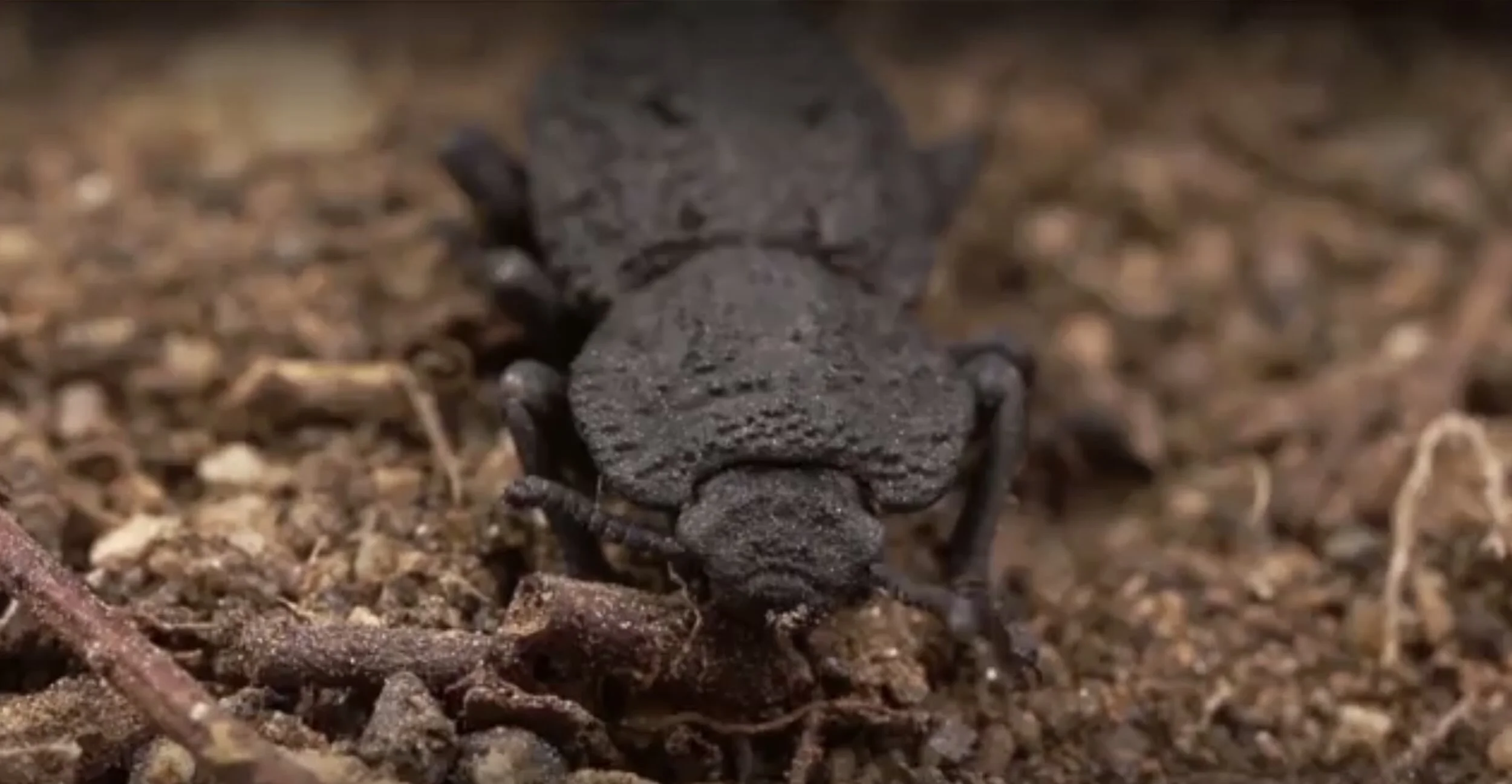The so-called diabolical ironclad beetle, formally known as Nosoderma Diabolicum, is an incredible little critter that can withstand loads thousands of times larger than its body weight. Scientists are looking into mimicking this feat in new materials.
Nosoderma diabolicum more commonly known as the diabolical ironclad beetle - Image Credit: Purdue University/Erin Easterling
Let's start with a little background information on this peculiar beetle since it is little-known. Diabolical ironclad beetles are mainly found in dry and barren environments along the west coast of the United States. They can reach a length of 16 to 22 millimeters, and their color varies from light brown to dark grey.
The beetles are mainly seen in the months April and May hanging out under the bark of oaks. When attacked by predators, they pretend to be dead and wait for the attacker to let go as they cannot be broken due to their armored structure. The beetle is only ever in real danger when attackers are capable of swallowing them whole.
Nothing particularly out of the ordinary so far, until you get to the fact that they can withstand an applied force of approximately 150 newtons (akin to about 15 kilograms), a whopping 39.000 times their own body weight before their exoskeleton starts to give. To put this in perspective, a car tire would implement a force of about 100 newtons driving over the beetle on a dirt road. If you were to extrapolate this toughness to a human scale, a person weighing 100 kilograms would have to be able to withstand a weight of 3900 tons to deliver the same performance. To give you an idea, 3900 tons is roughly equal to the curb weight of two thousand F150 pickup trucks!
To compare ourselves with the diabolical ironclad beetle we should to be able to handle the weight of two thousand of these trucks.. - Image Credit: Art Konovalov via Shutterstock / Edit and HDR tune by Universal-Sci
Taking note of the incredible fact that these tiny creatures can withstand being driven over by a car, a team of researchers from the University of California took a closer look at them. They discovered that its remarkable resilience stems from its two armorlike "elytron" that meet at a line, called a suture, covering the length of the abdomen.
There exists a significant discrepancy with regular flying beetles where the elytra are there to assist in flight and safeguard the wings. Since the diabolical ironclad beetle doesn't have wings, the elytra and connective suture can help to distribute an applied force more evenly throughout its body.
In order to uncover its secrets more extensively, the researchers put the beetle through some tests and followed up with comprehensive computer simulations and 3D-printed models that isolated specific structures to enhance their understanding of the function they fulfill in saving the beetle's life.
The team figured out that the creature's jigsaw-like suture offers two lines of defense. First of all, the interconnecting edges lock to restrict themselves from pulling out of the suture like puzzle pieces. Secondly, the suture and blades delaminate, which leads to a more graceful deformation that alleviates the potential catastrophic defeat of the exoskeleton. Each approach dissipates energy to bypass a deadly impact at the neck, where the beetle's exoskeleton has a higher probability of breaking.
The researchers believe that knowledge gained from their study might lead to better materials and connections between materials, which could be very useful in, for example, the aerospace industry. Improvements in joining dissimilar materials such as plastics and metals into technical structures appear possible as well.
The scientists believe that their findings could help improve the reliability of jet engines, among other things - Image Credit: frank_peters via Shutterstock / HDR tune by Universal-Sci
According to David Restrepo, one of the researchers, joining different types of materials together without limiting their capacity to sustain loads remains a problem in the world of engineering. According to him, the diabolical ironclad beetle has strategies to bypass the current limitations.
The research results could also be applied in mechanical fastenings and in the development of tough, impact-resistant, and shatterproof materials that can join various other materials together. New, interlocking seams made from biomimetic composites that would have a notable increase in toughness compared to other commonly used engineering joints could be developed as well.
Maryam Hosseini, a postdoctoral researcher who also worked on this project, explained that traditional fasteners, used in conventional gas turbines for airplanes, join metals and composite materials together while adding weight that introduces stress, potentially leading to fractures and corrosion. According to him, these fasteners ultimately reduce the performance of the system and need to be replaced every so often. The interfacial sutures of the diabolical ironclad beetle present a robust and more predictable failure, which might help solve these issues.
There might be even more potential use cases derived from the lessons learned from this remarkable little beetle. If you are interested in a more detailed look at the underlying research, the scientists have put their findings in an article published in the science journal Nature, linked below.
Sources and further reading:
FEATURED ARTICLES:
If you enjoy our selection of content please consider following Universal-Sci on social media





















